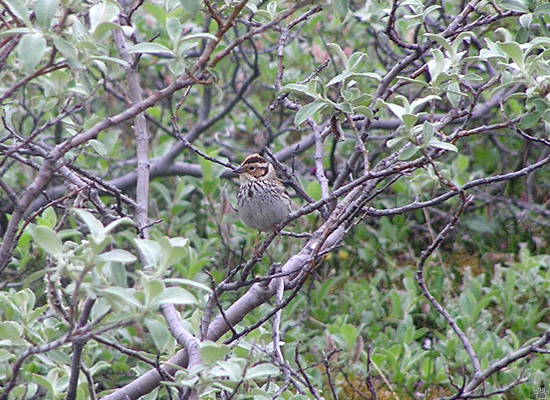
Little bunting (Emberiza puzilla), Coal Mines, Chukotka, Russia. |
Chukotka, part 6: Lowland tundra (continued)
Southern tundras have much more shrubs than typical tundras: in some places you have to make your way through alder, birch and willow forests up to 3 m tall. Just ten years ago they were very local north from Anadyr River, but now they cover extensive areas in river valleys and foothills all over Chukotka, except for the Arctic Coast.

Northern bilberry (Vaccinium uliginosum), Volchya Valley. |
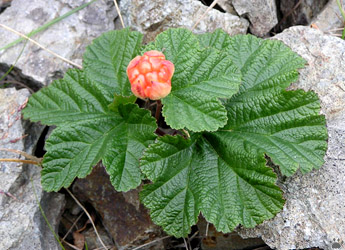
Cloudberry (Rubus chamaemorus), Volchya Valley. |

Ioanna River Valley. |
These shrublands are difficult to cross and full of bugs in summer, but they are a much better place than typical tundras for surviving the winter. A lot of wildlife uses them as shelter. |
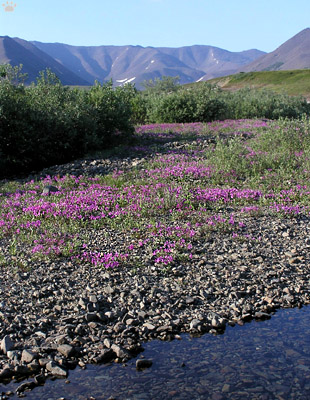
Ioanna River Valley. |
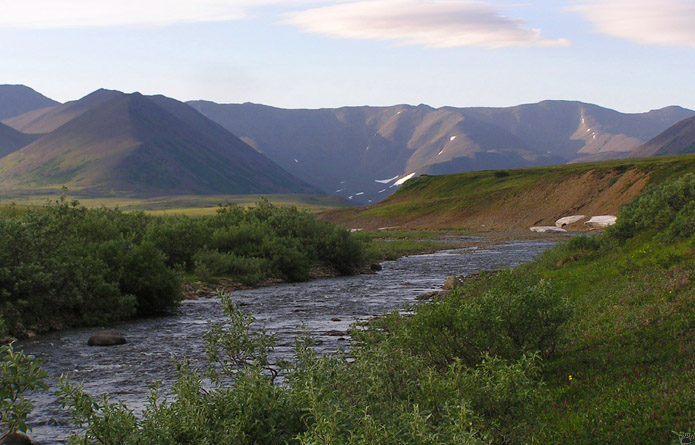
Ioanna River Valley. |
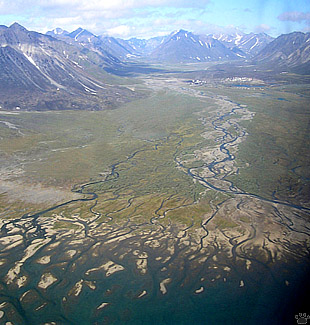
River delta, Cross Bay, Chukotka. |
Rivers of Chukotka flow over permafrost so they erode their banks rather than bottoms. Most of them consist of countless channels, and can be difficult to cross. |
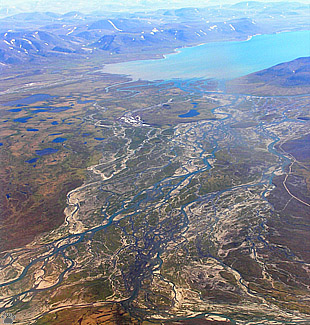
River valley, Cross Bay, Chukotka. |
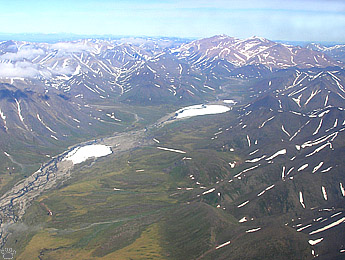 |
 |
| Naleds, Iskaten Range. |
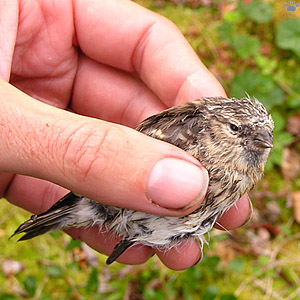
Fledgling Arctic redpoll (Carduelis hornemanni), Volchya Valley. |
In winter, rivers freeze to the bottom in some places. Water breaks the ice and freezes on top of it. These ice plugs, called naled in Russian, often don't melt until the next winter. |
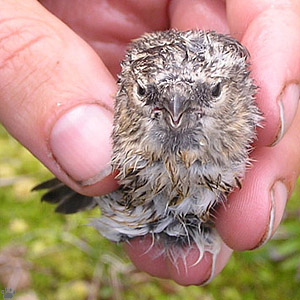
Fledgling Arctic redpoll, Volchya Valley. |
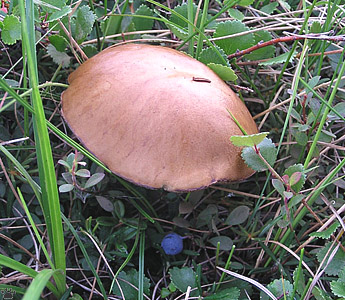
Birch bolete (Leccinum scabrum), Volchya Valley. |
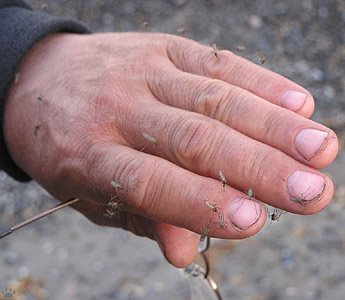
Mosquitoes, Sbornaya River. |
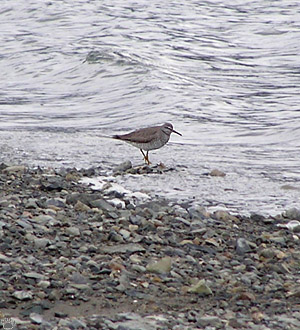
Gray-tailed tattler (Heteroscelus brevipes), Cross Bay. |
Tattlers are rare inhabitants of river valleys. Gray-tailed tattler inhabits wet, broad valleys and deltas, while wandering tattler prefers fast foothill rivers with riparian forests, and nests on trees. |
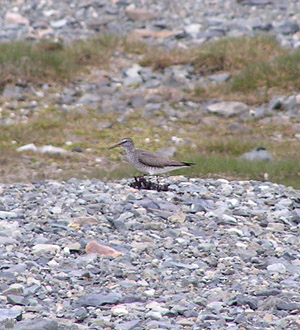
Gray-tailed tattler, Cross Bay. |
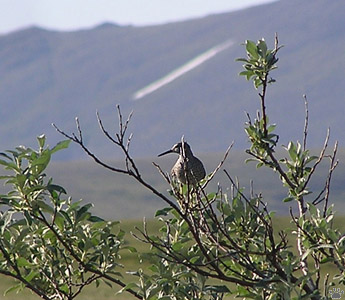 |
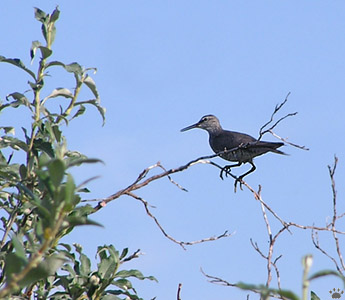 |
| Wandering tattler (H. incanus), Ioanna River. |

Nests of dusky thrush (Turdus eunomus),
Dionisia Mt. |
As vegetation zones shift to the north, many southern species increase their ranges. Chukotka is being rapidly colonized by lynxes, forest lemmings, dusky thrushes, magpies, swallows and numerous southern insects and plants. So far, northern species don't seem to be in trouble, but things might change very rapidly. |
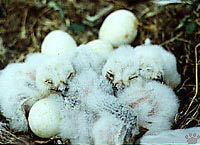
Nest of snowy owl (Bubo scandiaca),
Cape Schmidt. |
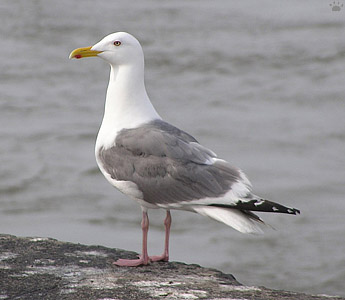 |
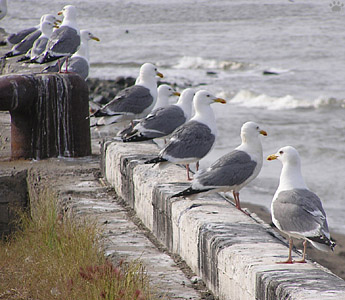 |
| Vega gulls (Larus vegae), Coal Mines. |
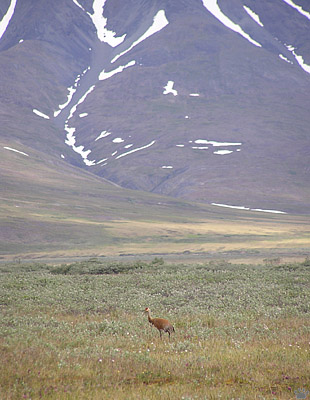
Sandhill crane (Grus canadensis), Cross Bay. |
Warming climate makes it easier for wildlife to cross the Bering Strait. Asian bird species are now colonizing Alaska, and American ones are establishing in Siberia. |
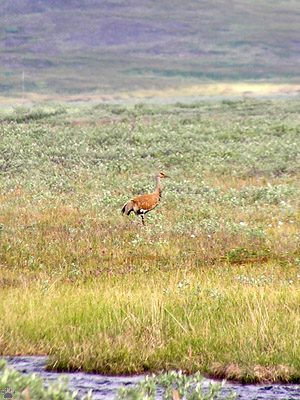
Sandhill crane, Cross Bay. |
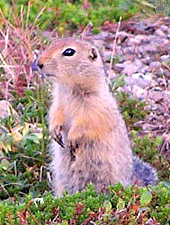 |
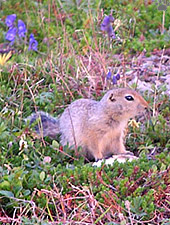 |
 |
 |
| Arctic ground squirrels (Spermophilus parryi), Dionisia Mt. |
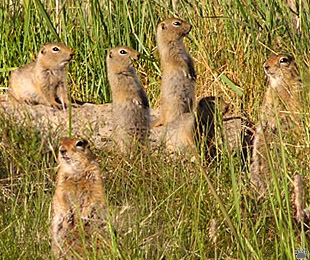
Arctic ground squirrels, Dionisia Mt. |
Mammals of lowland tundra are usually difficult to see, but Arctic ground squirrels are very tame and often live in towns. |
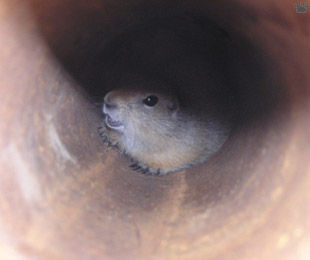
Arctic ground squirrel living in a metal pipe, Dionisia Mt. |
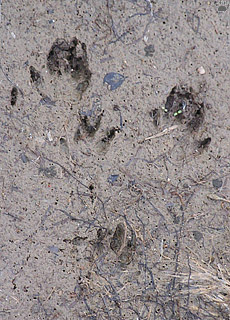
Arctic ground squirrel tracks, Belyaka Spit. |
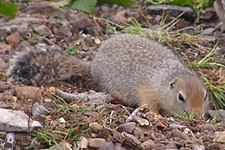
Arctic ground squirrel, Cross Bay. |
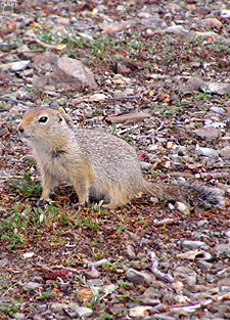
Arctic ground squirrel, Belyaka Spit. |
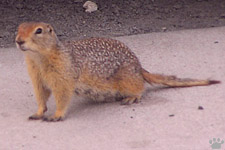
Arctic ground squirrel, Anadyr Airport. |
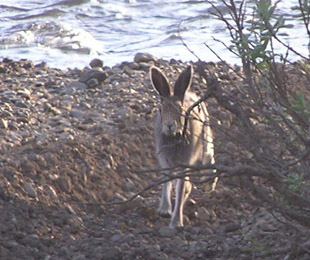
Alaskan hare (Lepus othus), Sbornaya River. |
Hares of Chukotka have been recently found to belong to an Alaskan species, not to mountain hare (L. timidus) of Eurasia. |
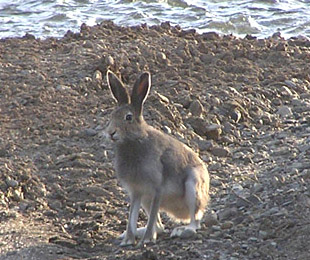
Alaskan hare, Sbornaya River. |
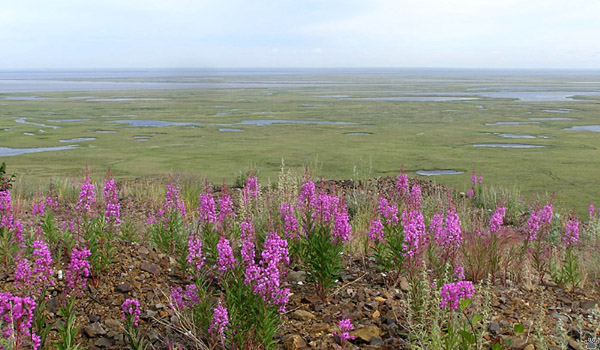
Fireweed (Epilobium angustifolium), Volchya River Delta, Chukotka, Russia. |
Part 7. Mountain tundra
Back to Part 5
Home
|




































